5 Reasons ULE 880 Is a Bellwether Sustainability Standard
What if a company wants to be branded as a sustainable company, to improve its reputation with businesses, customers, employees, and investors? In my recent blog, 5 Lists of the Most Sustainable Companies, I showed the need for a standardized process for assessing and rating organizations as sustainable enterprises. Wouldn’t it be nice if there were certification process for sustainable companies, as there is now for some products and buildings? ULE 880 intends to fill that vacuum for manufacturing companies. There are five reasons it could be a bellwether sustainability standard.
First, it is credible. Underwriters Laboratory (UL) knows how to create standards—its UL marks appear on 72,000 products worldwide. UL Environment (ULE) has partnered with GreenBiz, who know sustainability and its relevance to the business community. Together, they developed ULE 880’s scoring approach, five domains, 100 indicators, tiers of achievement, and 3rd party audit criteria.
Second, it was developed using an open and transparent process. Modeling stakeholder engagement, ULE and GreenBiz invited feedback on the first draft of ULE 880 between July and September, 2010. They received 1,500 comments from 740 stakeholders, more than ever received for previous UL standards. In mid-November 2010, ULE and GreenBiz convened a Stakeholder Advisory Panel in Chicago to receive further guidance on the domains and indicators in the redrafted standard.
In the interest of full disclosure, I was invited to be on that panel and was impressed with the sincere desire to ensure ULE 880 certification is the gold standard for sustainable companies. They are in a second round of stakeholder review and comment on the resulting Interim Sustainability Requirements (ISR) version of the standard, and are about to enter the pilot phase. The standard will be released later this year.
Third, it leverages and compliments existing sustainability-related self-reporting protocols and standards. A number of leading organizations have developed standards or guidelines that cover specific attributes of organizational sustainability. ULE 880 incorporates these by reference, with a priority given to company-wide, global, verifiable standards and reporting protocols.
Fourth, it is verifiable. It uses a rigorous third-party audit to assess how a well a manufacturing company is doing on its sustainability journey, rather than relying on self-reported assessments and publicly available data. The criteria ensure the verification and certification process is repeatable and consistent when rating different organizations within the same sector and when rating the same organization from one year to the next.
Fifth, it encourages results and continuous improvement. It gives credit for policies, baseline data, and reporting, but more importantly it looks for evidence of performance on those good intentions against a baseline year of 2005. Companies certified under ULE 880 must demonstrate tangible improvements in environmental and social impacts across their operations. Further, the recertification requirement drives companies to continually improve their sustainability performance.
ULE 880 advances the black art of assessing the sustainability of companies. It provides an excellent learning vehicle on corporate sustainability and will helps assess and manage potential supply chain risks and impacts. ULE 881 for companies in the service sector is in the wings. These are significant steps forward in the realm of more rigorous company-level sustainability standards.
My only reservation is that ULE 880 assesses a company’s progress toward its aspirational goals which are “aggressive and feasible to achieve and verify.” If all companies received the highest tier of certification in the standard and actors in other sectors emulated their leadership, would that be good enough to achieve a truly sustainable society? I wonder if the business world is ready for a more challenging assessment against Mother Nature’s aspirational goals for truly sustainable enterprises. More on that in my next blog.
Bob

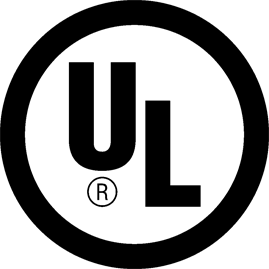
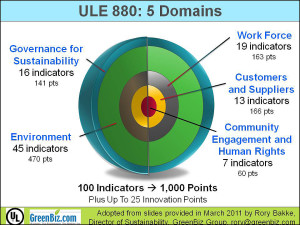
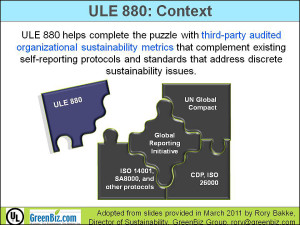
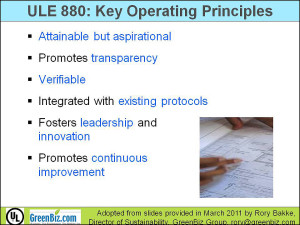
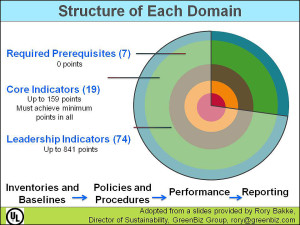
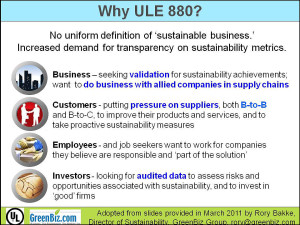



Comments are closed.